Neon lights, measuring instruments, and highly concentrated individuals on one side, while on the other side there are sweat-soaked musicians on small club stages with an immense thirst for beer. There are probably not many worlds that differentiate from one another as much as the pro-musician’s, as well simultaneous engineer. In Dieter Burmester’s Berlin life, both entities are combined: the originally born Austrian financed his studies of Electro technology through various musical engagements and still to this day considers music his favourite hobby and most inspirational source.After he invested his first self-owned money into an expensive sound system and dismantled it into little pieces, he realized that the established technology know-how from his studies proved themselves much more advanced than the music industries state of the art. He then concluded to combine his engineering expertise and skills with his musical ability and commence to build the most prestigious sound system in the world: the very beginning of Burmester’s manufactory.We met this strikingly bright man in his private residence nearby Hohenzollerndamms and talked with him about his impressive guitar collection, the tale of Berlin’s Manufacturer, his past in the capital and why he never listens to MP3s.This story is featured in our second book, Freunde von Freunden: Friends, order within Germany here, or find the book internationally at selected retailers.
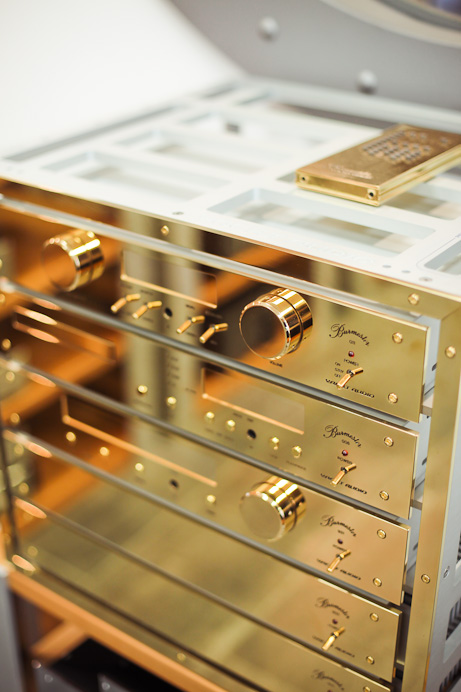

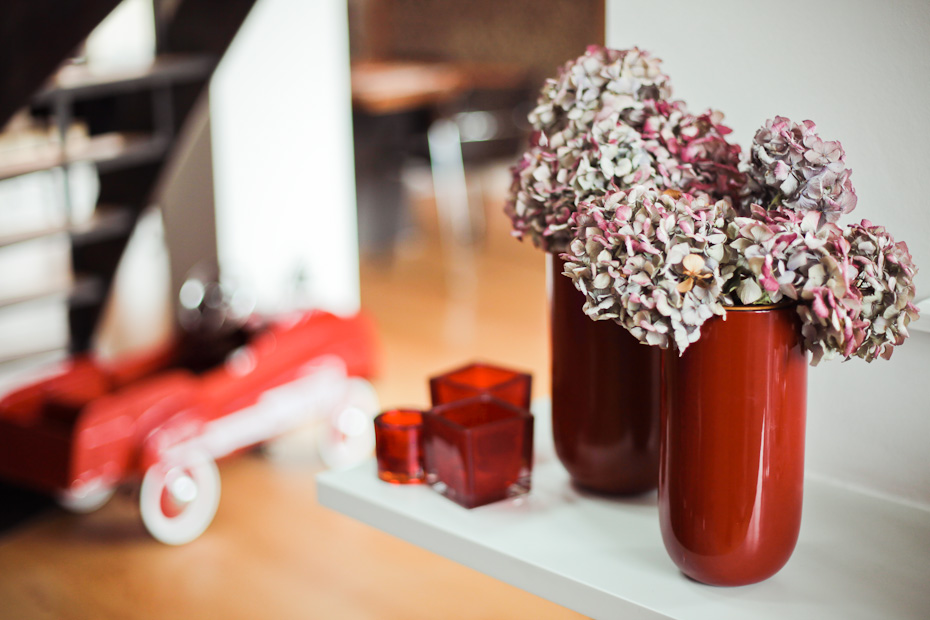
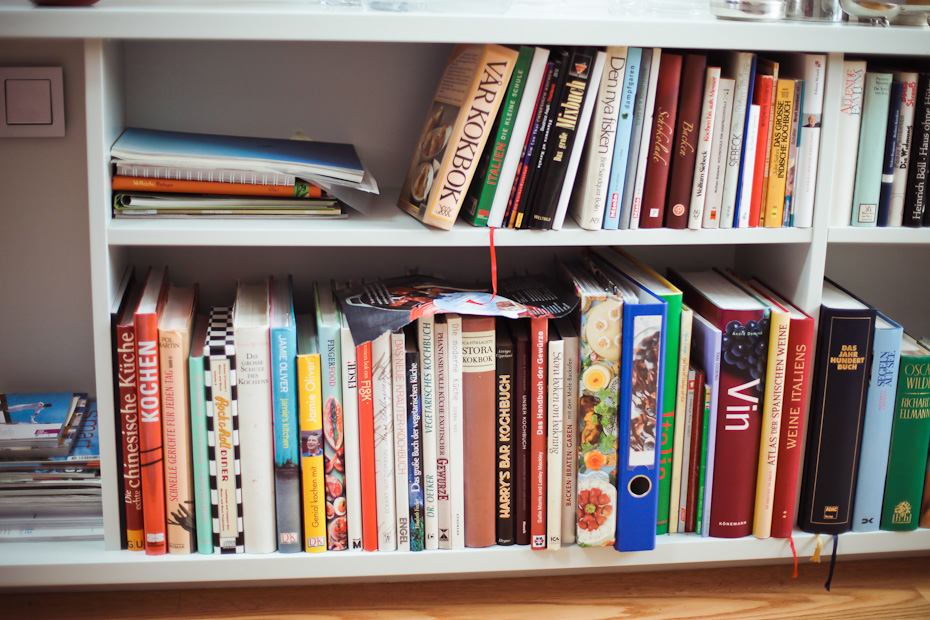








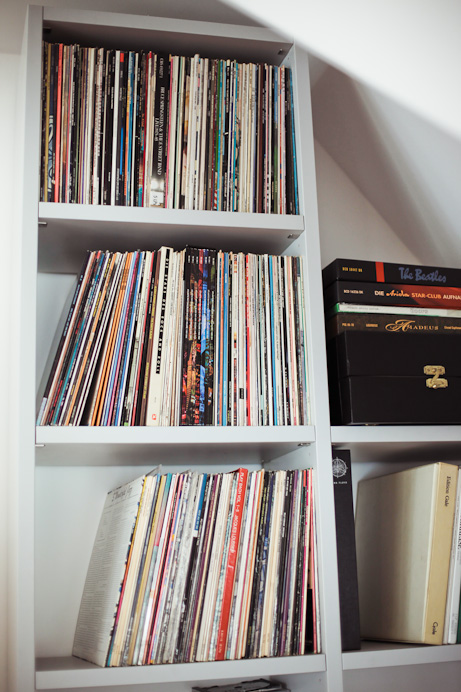









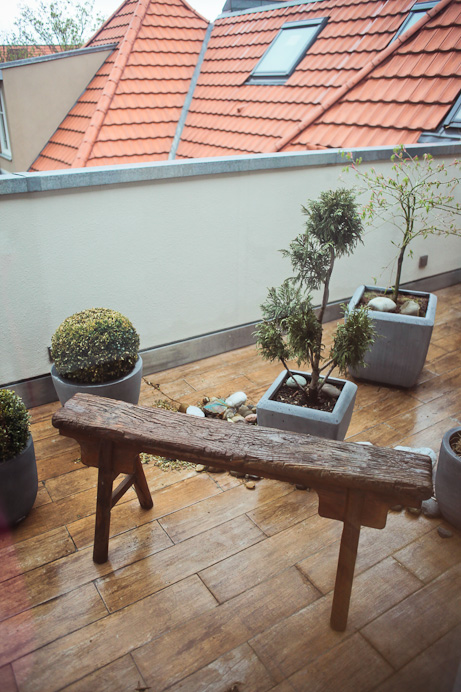







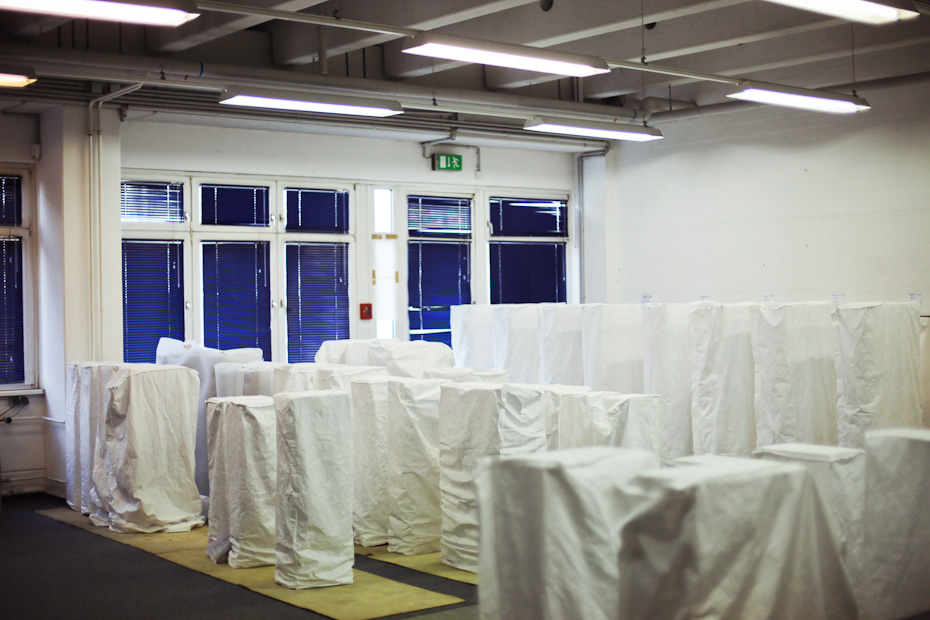






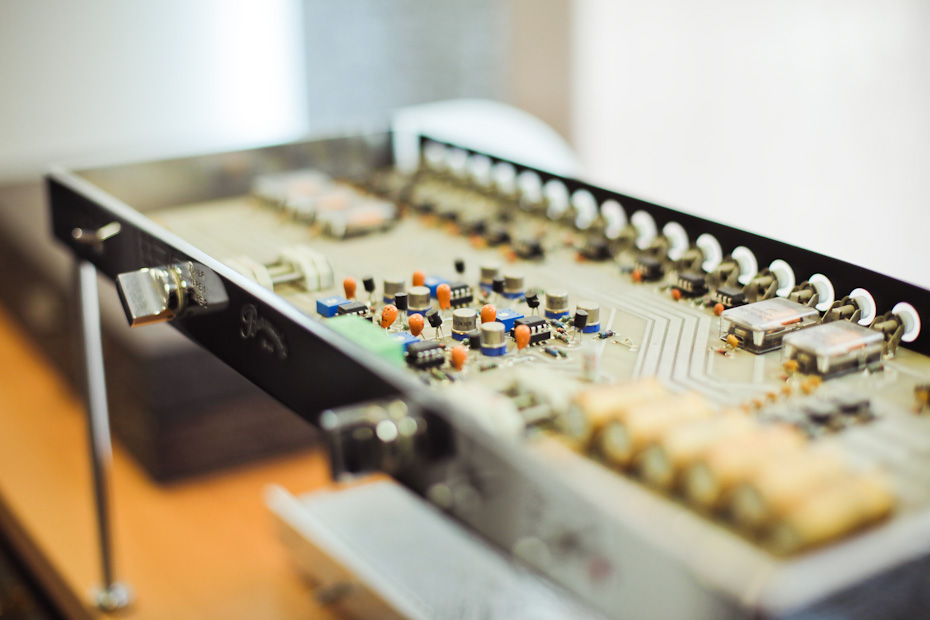




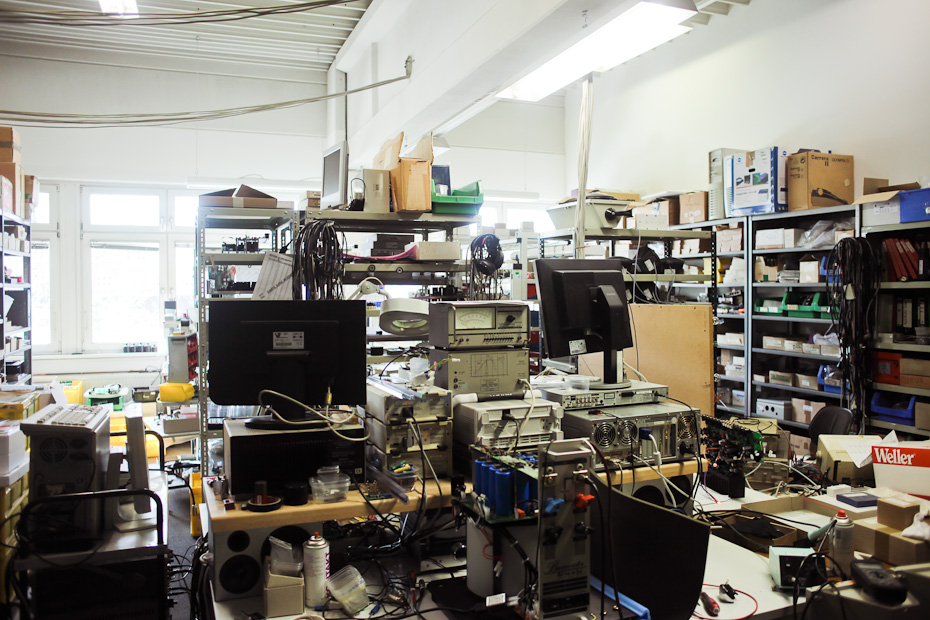


Your manufactory is located in Schöneberg. Why did you move here?
We are here in Schmargendorf, at the border to Dahlem – we have always felt drawn to the Western parts of Berlin. In the past, I already lived in Schöneberg and then we decided to look for a spacious top floor and at last got lucky here.
It is quite the striking contrast – downstairs you stand in front of this venerable building, and when you get up here, there is a brief ‘AHA’ moment. How was it for you when you first inspected the new flat?
Initially, we saw a sign on the building, mentioning that 3 flats were going to be built on the top floor. The building’s structure looked very good and as we took the elevator upstairs, we immediately discovered a hundred-year-old attic. Even though it was not finished yet, we knew that the size of the facilities were absolutely perfect for us. We then asked the landlord if it was possible to make one big flat instead of three. They agreed and positioned a new construction on top of the old building, but did not alter the facade nor the roof line, due to the landmark status.
And how did it look like before the renovation?
It was a typical hundred-year-old attic filled with pigeon feathers and trash. But one could notice the potential, regardless. My life partner and I could envision the place’s endless possibilities right away.
Did you ever play with the idea to move to the Eastern parts of the city?
Not really. The section that I would find interesting is completely overpriced in my opinion.
Since when are you in Berlin?
I came here in 1968 to attend university and was immediately thrown into the political happenings of the time. I had only been here for three days and already there was a huge protest occurring in front of the Springer building. Mahler stood with a megaphone on top of a VW bus and wildly chanted at the political paroles. The entire period during my studies was a ‘hot phase’ and I have to admit coming to Berlin was the best decision of my life! It is impossible to withdraw oneself from this city. I don’t know of anything similar and I am always glad to return after long absences.
To which part did you move first to?
It was like with everybody else: my first flat was located in Wedding. Back then it was only 35,90 DM in rent. After that, I lived on a factory floor in Kreuzberg. The artist Salomé had his atelier downstairs.
At Moritzplatz?
Exactly.
That’s funny. We recently met up with the artist Elvira Bach who is a good friend of Salomé. I think at some point they shared a studio together…
Yes, this was directly at Moritzplatz, in the backyard to which one could see the border crossing of Heinrich-Heine Street. Salomé and Rainer Fetting lived right under us.
It must have been an exciting corner back in the day. How did you get involved with music?
Since I was fifteen, I have played every weekend on stages around Northern Germany. We played Beat-music or covered artists like the Stones, Santana, or The Beatles. During my education as a radio- and TV technician, as well when I left to Berlin to study Electronics, I kept on performing. To finance my studies, I played in a band with Bruno Frenzel and Bernd Noske, who were the founders of “Birth Control.”
You collect guitars as well, right?
Indeed, I have around 40 or so. I love playing them and each one of them has a specific personality to me. This might sound weird, since all of them have six chords, but every one sounds differently. There is some sort of reaction which makes them phrase and play in diverse ways. When I have a new idea for a song, immediately the guitar is part of the creation process.
How did you shift from dealing with medical measuring instruments, which you concentrated on during your studies, to audio devices?
Already as a starving student, I possessed a very costly sound system, which often unfortunately would stop working. Back then, it already cost 4,500 DM, the same as a Mini Cooper or VW Ente. Everybody thought I was mad! After university, a few fellow students and I founded an engineer’s office, which dealt with medical measuring devices, and developed computer interfaces on the side. I wanted to buy a new sound system, but none had the sufficient elements, nor an advanced circuit technology – the things I dealt with on a daily basis in my office. Therefore, I simply changed around the technology and thus managed to build my first amplifier, called “777.” A better name did not occur to me (laughing). My friends then tested it and wanted to have the same one. This is how the first, small production 1977 began. Already one year after, I could sustain myself solely from this. I had thought not to stand a chance next to the big companies like Sony or Grundig, but it worked out!
Back then, where there firms like Bose within the High-End realm?
It was a time during which lots of famous brands came into existence: Bose, Mark, Levinson, JBL, Krell in the United States… simply because the demand was there. As well, the analog records were doing quite well and one wished to have art and culture at home.
I think this is so interesting that you have the musical intuition contained within an engineer’s mind…
Yes, after family and friends, music is next. It even comes before traveling, cars, or whatever else. It doesn’t matter whether I play music on my own, go to a concert, or listen to it at home.
Do you also listen to contemporary music?
Yes, I am completely open to all of that. I listen a lot to Radio Eins, through which I acquaint myself with new bands and worlds. They have great concepts that always introduce unknown, exciting bands. Sometimes I even call the station to ask for particular titles so I can buy the Cd afterwards.
In which clubs did you use to play?
Everywhere really: from the philharmonic hall to Dachluke at Mehringdamm, Prälat in Schöneberg, as well as Deutschlandhalle…
Who were your musical influences?
In those days, you were able to hear people like John Mayall or Blood, Sweat & Tears play in the philharmonic hall – imagine that! To witness such talented bands in these amazing, acoustic places is such a different experience than to go to these gigantic halls, where acoustics’ are lousy and can be packed with people. Quasimodo was a place that had a great impact, as well. I went to innumerable amounts of concerts there. The same with A-Train. I just love this concept of club-concert. Eric Clapton, the Eagles, and Paul McCartney are one of the few that manage to play well in big halls.
Did you have idols?
I always had a broad quantity of interests. Of course I like Leonard Cohen and Bob Dylan, who created the best love songs without mentioning the word ‘love.’
What do you overall think about the discussion digital vs. analog in relation to the sound of music?
Both have advantages. I don’t want to discuss the downsides… one can talk good or badly about all technical objects. I recently declared a patent, with which one can make all digital sound carriers sound like vinyl records. One should not ignore in this discussion that the production of analog records runs completely digital – from the microphone to the mixer consoles to the processing, all is done digitally.
Do you own an iPod?
No, I have an iPad but don’t listen to MP3s… I rather starve for a while in order to listen to a piece of good quality music.
I would like to come back once more to the Burmester firm. How would you describe the team-dynamic that dominates there?
I always feel at ease when I can discuss things in the group. I have the knowledge of my generation and am constantly confronted by a completely different perspective of the modern-day 30 year-old individual. This becomes very obvious, for instance, that all our devices are able to be incorporated within a “Home Integration” system. Meaning, one is able to combine multiple devices at once. Personally, this is not interesting at all, but through the younger employees I realized the function’s significance. Besides the products, obviously the company culture develops itself further, as well.
You also make numerous individual products…
Visually, custom-made articles within the audio domain are not particularly exciting. But there are exceptions of course – we have installations, decorated with 24 carat gold, and equipped luxury yachts, but this somewhat rare.
How did the project to furnish the Bugatti Veyron with audio technology come into existence?
It is a funny story – I had been surfing for one week at the Baltic Sea when I received a call by Bugatti. The next morning, a Bugatti engineer from Wolfsburg was sitting on my terrace, asking me if I was interested to create the sound system for one of the most expensive cars in the world. I only had an old notebook and one pencil at my holiday home, and so I worked out the concept with these materials which I then, two days later, presented in Wolfsburg. Drivers and passengers can individually manipulate the sound and volume. The biggest challenge was to minimize the prototype with 30 percent of weight. But it all worked out well in the end. We then met Porsche at the VDT International Convention in Leipzig.
Do you think there is a global trend concerning the manual labour and value?
Yes, definitely. The background in a production with a high demand of quantity is to scale down the expectation in order to enable big masses of people to like and buy it.
Everything that is generated with a high demand of automations implies as well the idea that one can no longer be specific.
You are part of the foundation Handmade in Germany. How would you describe this initiative?
The initiator Mr. Schröder of WBPR had the idea to bring together various, small manufacturers. He held the view that these Hidden Champions should not hide and instead join each other under a common roof. We were the first members.
Are there any brands or products that thrill you for years?
Clearly, I want a good quality of life. For instance, I like to own good pens to do scribbles and to write letters. I love to do this and consider it an act of appreciation to take the time for it. An email always looks the same.
Do you have entrepreneurial role models?
Not really. I never quite oriented myself around others. I am often asked if there is a “Masterplan” – but there is none. In this case, Boris Becker and I think alike. He once stated: “To me, the next ball is always the most important one,” and this is exactly how I manage my company.
Thank you very much for this absorbing interview, Dieter!
Interview: Tim Seifert
Photos: Ailine Liefeld
Translation: Lara Konrad
